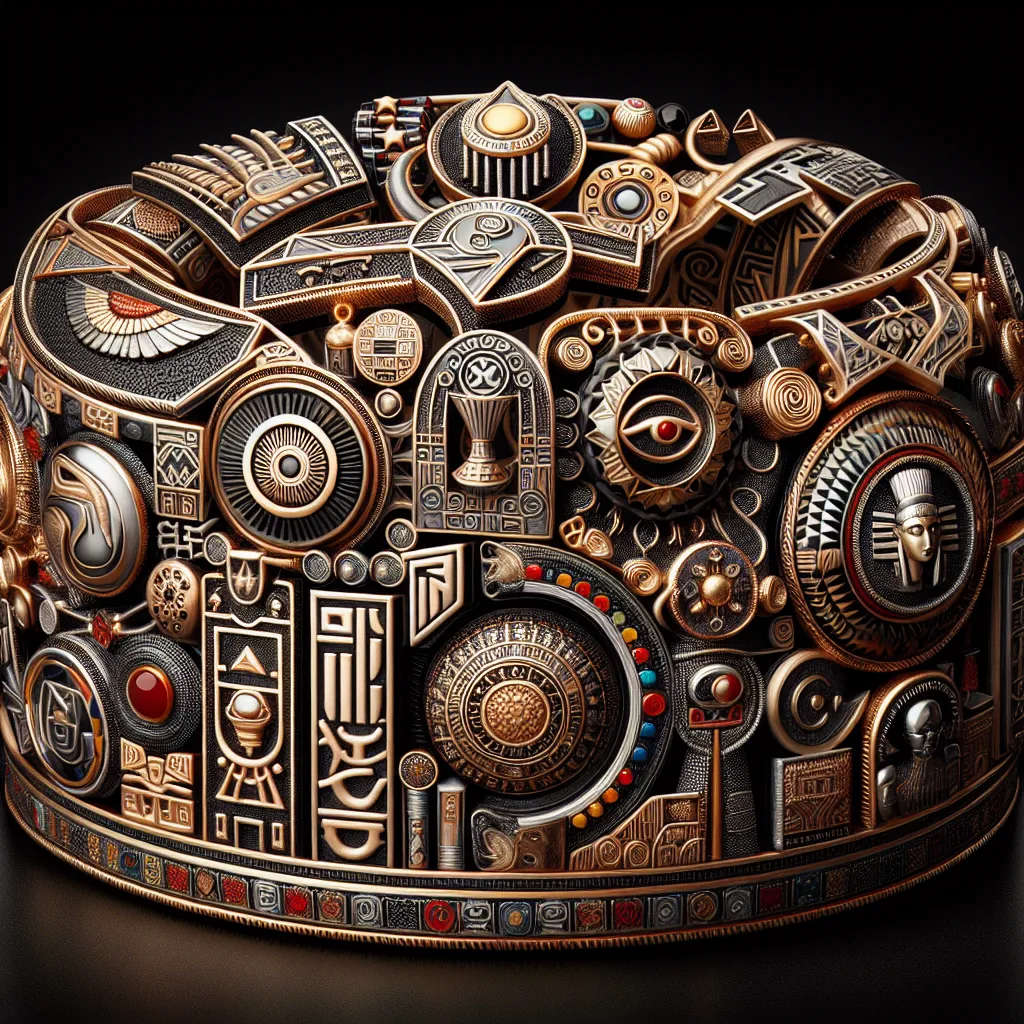Symbolic Meaning of Ornaments in Various Cultures
The use of ornaments in different cultures holds great symbolic meaning and significance. From ancient times to the modern era, ornaments have been an integral part of various cultural practices and traditions, often representing values, beliefs, and emotions.
In many cultures, ornaments such as jewelry, tattoos, and body piercings are used to symbolize identity, status, and belonging. For example, in some African societies, certain types of beads or jewelry are worn to signify tribal affiliations or marital status. Similarly, in Hindu culture, the mangalsutra necklace worn by married women acts as a symbol of their marital status and commitment.
Ornaments also hold spiritual and religious significance in many cultures. For instance, in the Christian tradition, the cross necklace is a powerful symbol of faith and sacrifice. In Native American cultures, feathers are often used in ornaments to symbolize honor, bravery, and connection to the spiritual world.
Furthermore, ornaments are frequently used to convey cultural narratives and traditions. In Chinese culture, jade ornaments are believed to bring luck and prosperity, while also being seen as a symbol of purity and moral integrity. In the Maori culture of New Zealand, intricate tattoos known as “ta moko” are used to depict a person’s tribal history, social status, and personal achievements.
Overall, ornaments play a crucial role in reflecting the values, beliefs, and identities of different cultures, showcasing the diverse ways in which symbolic meanings are attached to these decorative elements.
Cultural Significance of Traditional Ornaments
The symbolism of ornaments holds significant cultural importance in many different societies around the world. Traditional ornaments are not only decorative but also carry deep cultural and symbolic meanings that are often passed down through generations.
In various cultures, ornaments are used to signify important life events such as birth, coming of age, marriage, and death. These ornaments often serve as visual representations of cultural heritage, beliefs, and values. For example, in some cultures, specific ornaments are worn during wedding ceremonies to symbolize the union of two individuals and their families, while in others, ornaments are worn as protective talismans to ward off evil spirits or bring good luck.
The materials used in traditional ornaments also hold cultural significance. For instance, in some cultures, certain gemstones or metals are believed to have spiritual properties and are therefore incorporated into ornaments for specific rituals or ceremonies.
Furthermore, the patterns and motifs found in traditional ornaments often carry symbolic meanings tied to the natural world, spiritual beliefs, or historical events. These intricate designs can tell stories about the cultural identity and traditions of a community.
In conclusion, traditional ornaments play a vital role in expressing the cultural heritage and traditions of different societies. They serve as tangible symbols of identity, beliefs, and customs, providing a rich tapestry of cultural significance that continues to be cherished and preserved by communities around the world.
Interpreting Ornaments Across Different Societies
Interpreting ornaments across different societies reveals a rich tapestry of symbolism and cultural significance. From ancient civilizations to modern-day cultures, ornaments have played a pivotal role in conveying diverse messages and values. In many societies, ornaments are not merely decorative but serve as powerful symbols with deep-rooted meanings.
For example, in Chinese culture, the color red is prominently featured in ornaments, symbolizing good luck, joy, and prosperity. The use of red ornaments during traditional celebrations such as Chinese New Year reflects the belief in positive energy and happiness. Similarly, in Indian culture, intricate patterns and designs in ornaments often depict symbols of spirituality, with motifs representing cosmic energy and the interconnectedness of life.
Conversely, in Western cultures, ornaments such as the Christmas tree and wreaths are laden with symbolism. The evergreen tree represents eternal life, while the circular shape of the wreath signifies unity and the cyclical nature of life. These ornaments are not merely decorative but serve as visual expressions of profound cultural and religious significance.
Furthermore, in African societies, beadwork is a prevalent form of ornamentation, with each bead color and pattern carrying specific meanings. From conveying social status to symbolizing important life events, such as births and weddings, beadwork ornaments serve as a visual language, communicating intricate messages within the community.
Interpreting ornaments across these diverse societies underscores the universal human impulse to imbue objects with meaning and significance. Whether through colors, patterns, or materials, ornaments offer a window into the values and beliefs of different cultures, highlighting the rich diversity of human expression and symbolism.
The Role of Ornaments in Cross-Cultural Communication
Ornaments have long played a significant role in cultural expression and communication across different societies. Across various cultures, ornaments serve as powerful symbols, conveying meaning and tradition to those who understand their significance. From jewelry to body art to decorative objects, ornaments are an integral part of human expression and play a crucial role in cross-cultural communication.
In many cultures, ornaments are used to convey social status, religious beliefs, and personal identity. For example, in some African societies, certain beadwork patterns communicate tribal affiliations or marital status. Similarly, in Hindu culture, the significance of certain types of jewelry or body markings may convey marital status, religious beliefs, or social standing. These symbols serve as a visual language, allowing individuals to communicate their cultural background and personal identity to others within and beyond their community.
Furthermore, ornaments often serve as a means of connecting with others and establishing cross-cultural understanding. When individuals from different cultural backgrounds encounter each other, ornaments can provide a starting point for communication and connection. By recognizing and understanding the significance of ornaments in different cultures, people can engage in meaningful cross-cultural dialogue and foster mutual respect and appreciation for diverse traditions.
In conclusion, ornaments hold deep cultural significance and play a vital role in cross-cultural communication. Understanding the symbolism behind ornaments in different cultures is essential for fostering intercultural understanding and building connections across diverse communities.
Keywords: ornaments, symbolism, cross-cultural communication, cultural traditions, jewelry, body art, tradition and identity

